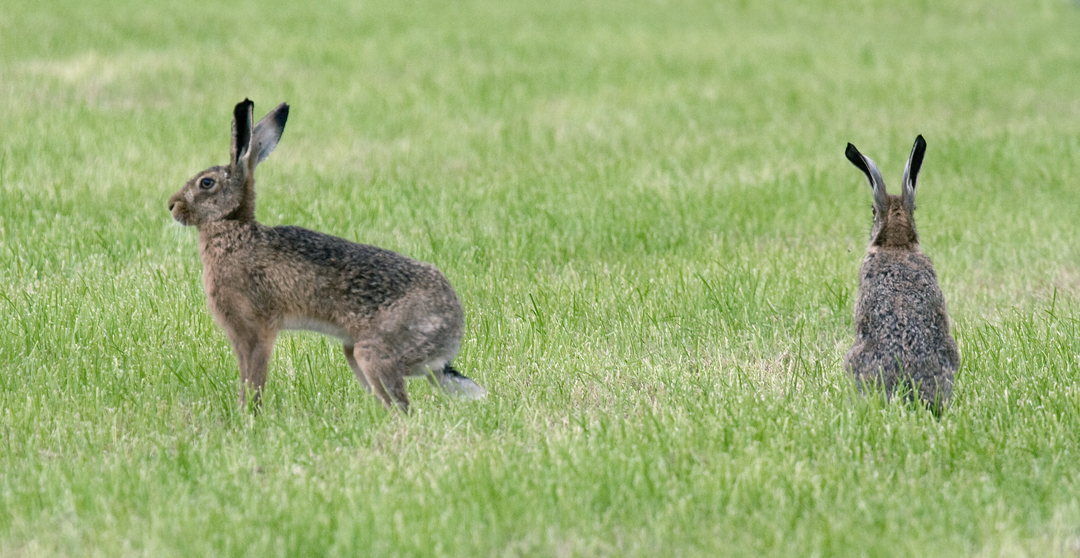BTO create and publish a variety of important articles, papers, journals and other publications, independently and with our partners, for organisations, government and the private sector. Some of our publications (books, guides and atlases) are also available to buy in our online shop.
Annual report of the Seabird Monitoring Programme
Seabird Population Trends and Causes of Change: 1986–2023
This report presents the latest seabird population trends in breeding abundance and productivity using data from the Seabird Monitoring Programme (SMP).
The report documents changes in the abundance and productivity of breeding seabird species in Britain and Ireland from 1986 to 2023, and provides a detailed account of the 2021, 2022 and 2023 breeding seasons.

Search settings
Implications of transformation to irregular silviculture for woodland birds: A stand wise comparison in an English broadleaf woodland
Author: Alder, D.C., Fuller, R.J. & Marsden, S.J.
Published: 2018
Woodland birds in Britain have undergone significant long term declines since the late 1960s, associated in particular with changes in woodland structure in general, and loss of early successional vegetation. Irregular, continuous canopy broadleaf management is a form of selective logging, very recently adopted in UK that produces woodlands with open canopies and substantial mid- and understorey growth. We examined spring and late winter bird densities, estimated using distance sampling, at 310 points in irregular, transitional (that being managed towards irregular), limited intervention, and coppice stands within a large working broad-leaf woodland in lowland southern Britain. Almost all understorey and canopy vegetation measures differed significantly across stand types. Ten of 20 species had highest spring abundance in irregular woodland, five in coppice, three in transitional, and just two in limited intervention. In winter, 5–6 species preferred each of limited intervention, irregular and transitional, while no species preferred coppice. Densities differed little across seasons except in Paridae where abundances increased in late winter during which limited intervention stands were used more by this group. Birds generally occupied similar niche positions and had similar niche breadths across seasons. Compared to under-managed woodlands, irregular silviculture in UK’s broadleaf woodlands is likely to enhance habitat quality for woodland birds, including several species of conservation concern e.g. marsh tit Poecile palustris which was twice as abundant in irregular stands as in any other stand type.
15.08.18
Papers
Potential Future Distribution & Abundance Patterns of Common Buzzards Buteo Buteo
Author: Jennifer A. Border, Dario Massimino, Simon Gillings
Published: 2018
15.08.18
Reports
Large gulls taking fully grown shorebirds during spring passage in Delaware Bay, USA
Author: Clark, J.A., Atkinson, P.W., Dey, A., Gillings, S., Mace, J. & Neima, S.
Published: 2018
15.08.18
Papers
Evaluating spatiotemporal trends in terrestrial mammal abundance using data collected during bird surveys
Author: Massimino D., Harris S.J., Gillings, S
Published: 2018
Information on the status of biodiversity is crucial for species conservation and management. Large scale assessments are only feasible through citizen science but some taxa are poorly monitored because few people specialise in them. This paper explores how to alleviate this problem by using data collected for poorly monitored species as an add-on to existing bird surveys.
04.08.18
Papers

LifeCycle - Issue 7, Spring 2018
Author: BTO / Multiple
Published: Spring 2018
Includes the results from the 2017 breeding season. It also features articles on turning a Tree Sparrow project into a RAS, monitoring Swallows, devising a Corn Bunting nesting project, and mentoring nest recorders.
11.07.18
Magazines Lifecycle